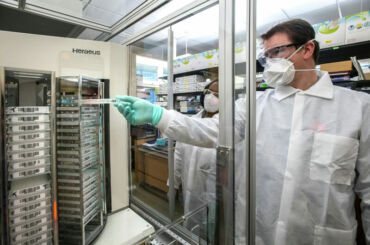Top food quality assurance standards aren’t just an alphabet soup of acronyms but a ticket to taste town! ISO 22000 serves delectable safety. HACCP throws a party against food hazards. SQF assures, ‘this food isn’t just playing safe, it’s winning’. And of course, BRC Global Standards – allowing products to retain their ‘license to chill.’ These standards ensure we fill our stomachs, not hospitals! Stick around, folks. There’s a hearty helping of information stew simmering away, ready to give you much more than just a taste of food safety!
Understanding Food Quality Assurance
Diving into the world of Food Quality Assurance can feel like embarking on a thrilling culinary journey, where precision, professionalism, and a pinch of humor are key ingredients for understanding its intricate dynamics. Much like a secret recipe, the elements of Quality Assurance (QA) blend together to form a perfect dish, tantalizing to both the taste buds and the discerning eye of the food inspector.
Now, let’s toss around some Quality Assurance benefits like a salad. QA ensures that food products meet the necessary safety, hygiene, and quality standards. It’s like a safety net (but for food), catching any substandard food items before they land on your plate. Now, wouldn’t you sleep better knowing that a team of diligent QA folks is working round-the-clock to ensure your pizza toppings are fresh and your chocolate is free from contaminants?
However, there are some food quality misconceptions as well. Some believe that any food product with a QA stamp is automatically calorie-free, guilt-free, and can be eaten in unlimited quantities. While we wish this were true, it’s not. Also, contrary to popular belief, QA officers are not mythical creatures with superhuman abilities. They cannot detect a single speck of dust on a carrot from a mile away. They’re just highly trained professionals doing their best to ensure food quality.
In this wild culinary voyage, it’s essential to understand that Food Quality Assurance isn’t just about maintaining high standards, but also about debunking misconceptions. After all, it’s not just about serving a great dish, but ensuring it’s cooked right, tastes right, and feels right too!
Importance of Quality Assurance in Food Industry
Alright folks, let’s chew on the meaty topic of why quality assurance is the secret sauce in the food industry.
I promise, it’s not just about avoiding the infamous road trip food poisoning.
It’s also about making friends with the law, because hey, who doesn’t love to be on the right side of regulations?
Ensuring Food Safety
When it comes to the food industry, quality assurance isn’t just a fancy term, it’s the secret sauce to ensuring food safety and achieving that five-star customer satisfaction. It’s like the superhero that swoops in, cape billowing, to save the day from foodborne illness prevention. The unsung hero of hygiene practices enforcement, it’s the food industry’s own personal Batman.
But hey, quality assurance doesn’t just get to put on a fancy suit and call it a day. Oh no, it’s a round-the-clock job – a never-ending battle against those pesky bacteria and viruses that are just waiting for their chance to wreak havoc. So, just remember, next time you enjoy a meal that doesn’t end in a trip to the hospital, it’s all thanks to quality assurance.
Regulatory Compliance Significance
While the importance of quality assurance in the food industry can’t be overstated, it truly shines in the realm of regulatory compliance, ensuring that every bite you take isn’t just tasty, but also meets the highest standards of food safety. Now, let’s chew over the ‘Regulation Impact’. It’s like a culinary referee, keeping all the food players in check. Without it, we’d be dining in the wild west, and nobody wants their steak served with a side of salmonella.
Moving onto ‘Compliance Challenges’, it’s a delicate dance between food producers and regulators. It’s like trying to bake a cake without upsetting the health inspector – and trust me, you don’t want to see him in a hairnet. Compliance is key, and in the food industry, it’s the secret sauce to success.
ISO 22000: Food Safety Management
Diving right into the meat of the matter, ISO 22000 is a universally accepted standard dedicated to Food Safety Management. Now, don’t go assuming this is some dry, bureaucracy-ridden document. No, no! This is the ‘James Bond’ of food safety standards, its mission? To ensure your chicken isn’t planning a deadly bacteria breakout and your apples aren’t part of a pesticide conspiracy.
Risk Assessment is the first step in this daring adventure. It’s like a food safety detective, sniffing out potential hazards. It’s the magnifying glass that scrutinizes every nook and cranny of your food production process. Is that a suspicious-looking germ lurking in your lettuce? Fear not, Risk Assessment is here to spot it and deal with it, making sure your food is as safe as a fortress.
Next up, we have the mighty Supplier Verification. Think of it as the bouncer at your food safety club, only letting in the suppliers who’ve passed its strict standards. It’s like a stern granny, checking every ingredient’s ID before they’re allowed into her kitchen. No shifty suppliers can slip past this guy!
In essence, ISO 22000 is your food safety superhero, using tools like Risk Assessment and Supplier Verification to keep you and your customers safe. And let’s be honest, who doesn’t want a superhero in their corner?
Just remember, ISO 22000 is just one of the many quality assurance standards for food. Stay tuned as we delve into more in the next subtopic: ‘HACCP Principles in Food Production’. Until then, keep your food as safe as a bank vault, folks!
HACCP Principles in Food Production
Shifting gears from our food safety superhero, ISO 22000, let’s now pull up a chair at the table of HACCP, or Hazard Analysis and Critical Control Points, the unsung hero in the epic saga of food production regulation. This system, my friends, is the Luke Skywalker to the Death Star of foodborne illnesses, the Sherlock Holmes to the Moriarty of microbiological hazards.
HACCP is a systematic approach used in food production as a means to ensure food safety. It involves identifying potential food hazards and defining critical control points in the food production process to prevent, eliminate, or reduce hazards to acceptable levels. Now, I wouldn’t be doing my job if I didn’t mention the importance of HACCP Training here. It’s like the Yoda to Luke’s Jedi training – crucial and transformative.
Let’s bring in a table to illustrate the key HACCP principles:
| Principle | Description |
|---|---|
| Hazard Analysis | Identify potential hazards in the food production process |
| Critical Control Points | Define steps in the process where hazards can be controlled |
| Monitoring Procedures | Establish procedures to monitor the control points |
Ah yes, Allergen Management, the trusty sidekick. It ensures that allergens are adequately controlled within the food production process to prevent cross-contamination.
SQF: Safe Quality Food Standard
Now, buckle up as we venture into the realm of SQF, or Safe Quality Food Standard, a rigorous food safety and quality program that’s akin to the Superman of global food certification standards.
SQF isn’t just a cool acronym. It’s an internationally recognized system that provides a veritable superpower to food industry professionals: control over food safety risks. SQF is like the superhero that swoops in to save the day when food safety villains try to wreak havoc on your edible endeavors.
So, let’s explore the SQF Certification Process and its potential benefits:
- SQF Certification Process: This process is a systematic one, designed to be as robust as Superman’s abs. It involves a pre-assessment, site registration, document review, and finally, the certification audit. Don’t worry, it’s not as scary as it sounds. Think of it as a workout for your food safety management system.
- SQF Benefits: There are numerous benefits to SQF, but let’s focus on the top three: firstly, it increases consumer confidence, making your products more appealing than a fresh apple pie on a windowsill. Secondly, it provides validation of your food safety plan, as solid as Superman’s steel-like resolve. Lastly, it gives you a competitive advantage, faster than a speeding bullet in the marketplace.
- SQF: A Global Standard: SQF is recognized worldwide, making it more popular than Superman in an international comic book convention. It’s your ticket to global business opportunities and the peace of mind that comes with top-notch food safety.
BRC Global Standards for Food Safety
If you thought SQF was impressive, fasten your seatbelts as we zoom into the world of BRC – the British Retail Consortium’s Global Standards for Food Safety. Imagine it as the James Bond of food safety standards, suave and efficient, ensuring your food products maintain their ‘license to chill’ (or heat, or serve).
Diving headfirst into the BRC Auditing Process is like embarking on a thrilling roller coaster ride of compliance. With its rigorous, yet clear-cut requirements, it will leave you with no stones unturned in your food safety management. From site standards to product control, process control to personnel, each area undergoes a meticulous scrutiny fit for a Sherlock Holmes investigation. You might feel a little like being on the set of a detective movie, but hey, who doesn’t love a good plot twist?
Now, the BRC Certification Benefits are a whole different story. Think of them as the Oscar you win after your blockbuster performance in the auditing process. First up, consumer trust. With BRC certification, consumers can rest easy, knowing you’ve got their backs when it comes to food safety. Next, it opens new doors in retail. Many retailers, especially from the UK, will only work with BRC certified suppliers. Finally, it gives you a competitive edge, making you the Usain Bolt in the food industry race.
Conclusion
In conclusion, maintaining high-quality assurance standards in the food industry is essential for consumer health and business reputation. Implementing and adhering to standards like ISO 22000, HACCP, SQF, and BRC Global ensures food safety and quality.
Therefore, all stakeholders in the food industry must strive to uphold these standards to guarantee food safety, enhance customer satisfaction, and foster a sustainable business environment.




